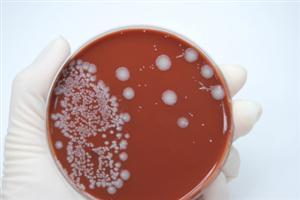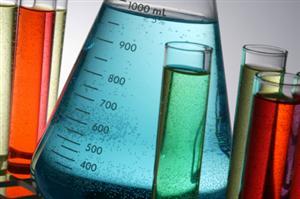Hypothesis
The stronger the alkali or acid, the higher the inhibition of bacterial growth.
Overview
What is acid/alkali?
An acidic solution contains a higher than usual proportion of Hydrogen ions (H+), while an alkaline solution contains a higher than usual proportion of Hydroxide ions (OH-). This occurs because compounds can exist as free moving ions in liquid state.
pH is a type of scale used to measure the acidity or basicity (alkalinity) of a solution. It ranges from 1 to 14. As the pH of a solution decreases, it becomes more acidic. When the pH increases, the solution becomes more alkaline. Hence, When an acid is dissolved in water, the pH will be less than 7 and when an alkali is dissolved in water, the pH will be greater than 7. Pure water has an acidity of about 7.
What are Bacteria?
A bacterium is a unicellular organism, and found in all shapes and sizes. They can be round, rods, or spirals. Though Anonie van Leeuwenhoek first observed them in 1676, the hardy bacteria have been around for billions of years. As the first organism to have life on earth, the bacteria has evolved over the years and there are now approximately five nonillion (5 x 10^30) bacteria on earth.
Bacteria can be beneficial to man. Louis Pasteur showed how bacteria can be used to create vaccines and has paved the way for medical progress and breakthroughs.
Scientific Terms
Microccus luteus, Serratia marcesceus, ions, pH
Conclusion
he results of the experiment show that the hypothesis should be accepted. The higher the concentration of acid/alkali, the more bacteria it kills.
This experiment is useful because it tells us what conditions which are not suitable for bacteria survival. Scientists can develop alternative methods to eradicate harmful bacteria once they know about this experiment.
Also consider
Will all bacteria react the same way to acid and alkali?
What other methods are able to kill bacteria?
How can you minimize the effect of random error in this experiment?
The following bacteria types can be used as alternatives for this experiment:
-Clostridium Perdringens
-Clostridium Botulinum
-Mycobacterium Tuberculosis
References
http://en.wikipedia.org/wiki/Bacteria
Related videos
Hey there! Here are some awesome videos about this science project that we think you'll really like. They're not only super fun, but they'll also help you learn more about the science behind the project. So sit back, relax, and get ready to have some fun!!


